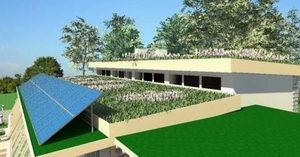Green Sustainable design - your intelligent decision
 Sustainable "green" architecture
is the practice of designing, constructing and maintaining buildings in
a way that their environmental impact is minimized. One of the most
important aspects of sustainable design is energy efficiency - a drive to reduce the amount of energy a building consumes over its life-span.
The truth of sustainable design is that approximately 80% of the design
decisions that influence a building's energy performance are made by
the architect in the early design phase; the remaining 20% are made by
engineers at the later phases of design. Therefore it is crucially
important for architects to be able to utilise a quick and reliable
energy performance evaluation at the very early stage of the building
design process.
Sustainable "green" architecture
is the practice of designing, constructing and maintaining buildings in
a way that their environmental impact is minimized. One of the most
important aspects of sustainable design is energy efficiency - a drive to reduce the amount of energy a building consumes over its life-span.
The truth of sustainable design is that approximately 80% of the design
decisions that influence a building's energy performance are made by
the architect in the early design phase; the remaining 20% are made by
engineers at the later phases of design. Therefore it is crucially
important for architects to be able to utilise a quick and reliable
energy performance evaluation at the very early stage of the building
design process. 





